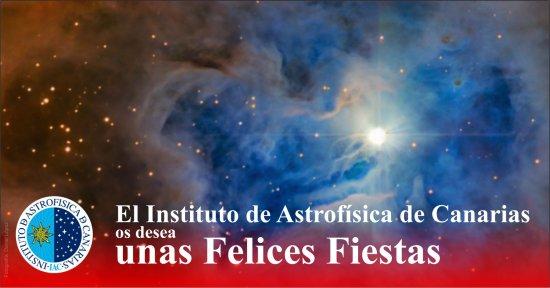It may interest you
-
 El Instituto de Astrofísica de Canarias (IAC) organiza el Premio Cosmos, un proyecto educativo internacional que llega por primera vez a España desde Canarias, con la colaboración del Área STEAM de la Consejería de Educación, Formación Profesional, Actividad Física y Deportes, y el patrocinio de la Fundación CajaCanarias, así como el apoyo de la Real Academia de las Ciencias de Canarias. Con varias ediciones consolidadas en Italia, Francia y Países Bajos, el Premio Cosmos tiene como misión impulsar la cultura científica, despertar vocaciones y celebrar la mejor literatura de divulgación enAdvertised on
El Instituto de Astrofísica de Canarias (IAC) organiza el Premio Cosmos, un proyecto educativo internacional que llega por primera vez a España desde Canarias, con la colaboración del Área STEAM de la Consejería de Educación, Formación Profesional, Actividad Física y Deportes, y el patrocinio de la Fundación CajaCanarias, así como el apoyo de la Real Academia de las Ciencias de Canarias. Con varias ediciones consolidadas en Italia, Francia y Países Bajos, el Premio Cosmos tiene como misión impulsar la cultura científica, despertar vocaciones y celebrar la mejor literatura de divulgación enAdvertised on -
 The Instituto de Astrofísica de Canarias (IAC) has been honoured with the Canary Islands Diamond Award in the category of Business and Economic Innovation, a distinction granted by Canal 4 Tenerife as part of the first edition of these awards on the occasion of its 30th anniversary. The recognition is bestowed “in acknowledgement of its scientific excellence and its international projection from the Canary Islands” and highlights the IAC’s contribution to the development of a knowledge-based economy in the Archipelago. The IAC was selected as the winner following a jury evaluation processAdvertised on
The Instituto de Astrofísica de Canarias (IAC) has been honoured with the Canary Islands Diamond Award in the category of Business and Economic Innovation, a distinction granted by Canal 4 Tenerife as part of the first edition of these awards on the occasion of its 30th anniversary. The recognition is bestowed “in acknowledgement of its scientific excellence and its international projection from the Canary Islands” and highlights the IAC’s contribution to the development of a knowledge-based economy in the Archipelago. The IAC was selected as the winner following a jury evaluation processAdvertised on -
 El Instituto de Astrofísica de Canarias organiza visitas guiadas y participa en la Feria de las Vocaciones Científicas de Canarias dentro de la Noche Europea de los Investigadores de la Macaronesia El Instituto de Astrofísica de Canarias (IAC) participará en MacaroNight 2025, la Noche Europea de los Investigadores e investigadoras de la Macaronesia, con dos actividades dirigidas a estudiantes de diferentes niveles educativos para acercar la astrofísica y fomentar las vocaciones científicas entre la juventud canaria. Visitas guiadas a la sede central del IAC Los días 22 y 23 de septiembre, elAdvertised on
El Instituto de Astrofísica de Canarias organiza visitas guiadas y participa en la Feria de las Vocaciones Científicas de Canarias dentro de la Noche Europea de los Investigadores de la Macaronesia El Instituto de Astrofísica de Canarias (IAC) participará en MacaroNight 2025, la Noche Europea de los Investigadores e investigadoras de la Macaronesia, con dos actividades dirigidas a estudiantes de diferentes niveles educativos para acercar la astrofísica y fomentar las vocaciones científicas entre la juventud canaria. Visitas guiadas a la sede central del IAC Los días 22 y 23 de septiembre, elAdvertised on
